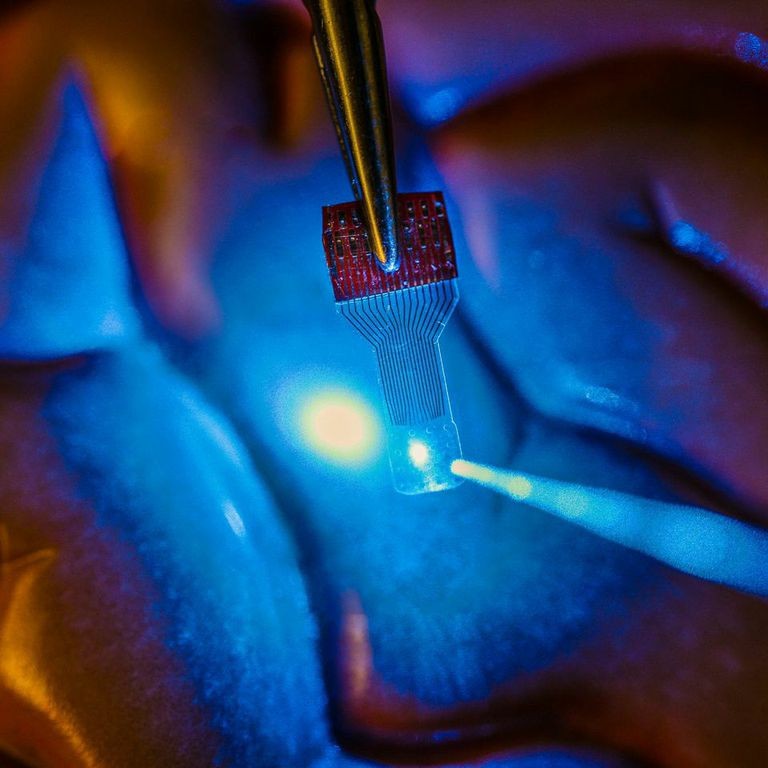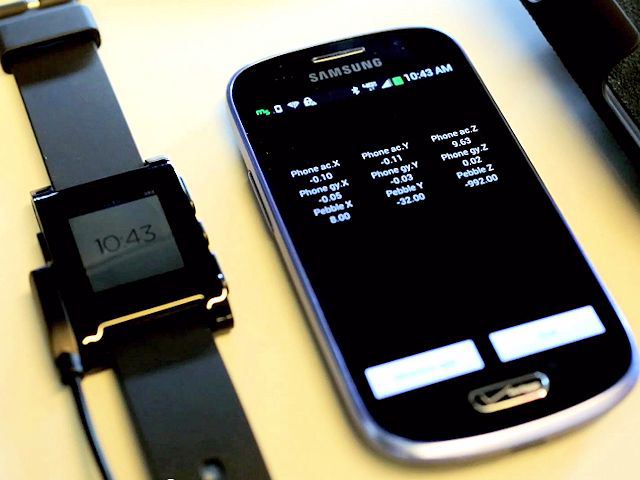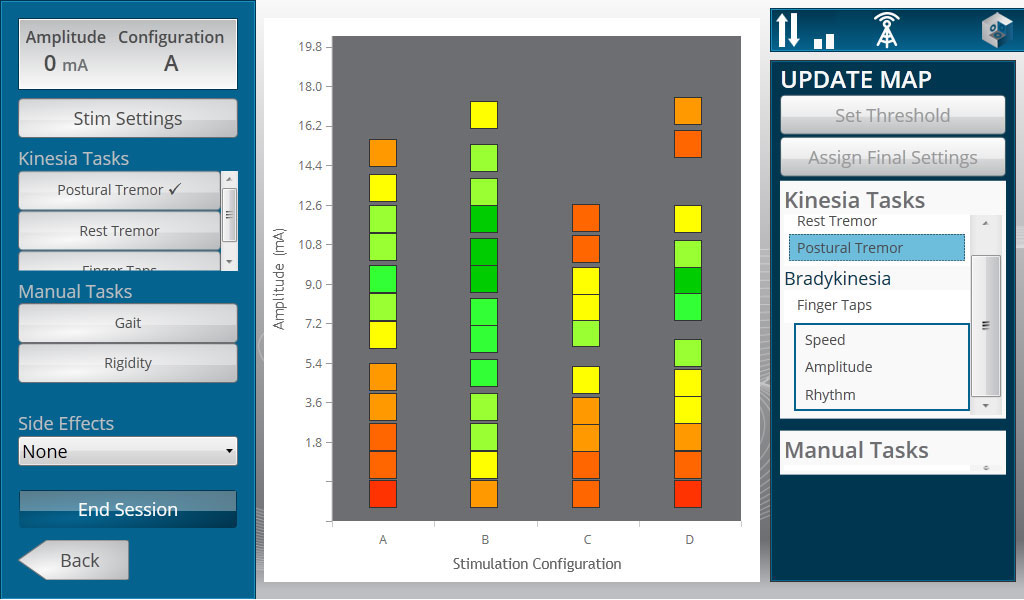Category: Parkinson’s
-

Transparent brain implant could improve neuromodulation
University of Wisconsin professor Justin Williams and colleagues have developed a graphene based, transparent sensor implant to help researchers better view the brain. Unlike existing devices, the sensor’s micro electrode arrays work in tandem with imaging technologies. This could improve neuromodulation therapies used to control symptoms, restore function, and relieve pain in patients with hypertension,…
-

Wearable and app for Parkinson’s tracking
Intel and the Michael J. Fox Foundation have combined smartwatches with analytics software to gauge the impact of Parkinson’s medications. (Intel press release here.) 25 clinical trial participants wore (originally crowdfunded) Pebble watches to track tremors, gait, sleep patterns and other indicators for four days. 300 data points per second per patient were relayed to the…
-

Cochlear implant pulses deliver DNA for gene therapy
UNSW Professor Gary Housley used electrical pulses from a cochlear implant to deliver gene therapy, successfully regrowing auditory nerves. Until now, the “bionic ear” has been largely constrained by the neural interface. In the study, Professor Housley and colleagues used the cochlear implant electrode array for novel “close-field” electroporation to transduce mesenchymal cells lining the cochlear perilymphatic…
-

Wearable sensors monitor Parkinson’s symptoms
Kinesia’s HomeView and ProView technologies provide standardized platforms to quantify Parkinson’s disease symptoms in the clinic and at home. Physicians have the tools to quantify tremor, assess dyskinesia and measure bradykinesia remotely. A patient uses a take home kit, programmed to specific symptoms and treatments,to complete motor tests several times a day. The patient can also enter…
-
Gait sensor for Parkinson’s patients could prevent falls
http://www.scientificamerican.com/article.cfm?id=could-a-simple-ankle-sensor-help-with-parkinsons-symptoms University of Alabama professor Emil Jovanov is developing a sensory cue device to detect freezing of gait episodes that lead to falls and serious injuries. It uses sensors embedded in a shoe or attached to the ankle. As soon as the system senses a gait freeze, it transmits an auditory cue (such as the…
-
Eye tracking data helps diagnose autism, ADHD, Parkinson’s
http://www.scientificamerican.com/article.cfm?id=eye-tracking-software-may-reveal-autism-and-other-brain-disorders USC’s Laurent Itti and researchers from Queen’s University in Ontario have created a data heavy, low cost method of identifying brain disorders through eye tracking. Subjects watch a video for 15 minutes while their eye movements are recorded. An enormous amount of data is generated as the average person makes three to five saccadic…
-
Brain imaging technique for early movement disorder diagnosis
http://news.ufl.edu/2013/06/13/brain-imaging/ Professor David Vaillancourt of the University of Florida believes that a diffusion tensor imaging technique could allow clinicians to assess movement disorders earlier, leading to improved treatment interventions and therapies. Movement disorders such as Parkinson’s disease, essential tremor, multiple system atrophy and progressive supranuclear palsy exhibit similar symptoms in the early stages, which can make…
-
Machine learning algorithms analyze mobile phone data for Parkinson’s research
http://mobihealthnews.com/22076/michael-j-fox-foundation-takes-first-step-toward-crowdsourced-research/ The Michael J. Fox Foundation is exploring how data sourced from mobile phones and analyzed with machine learning algorithms can improve Parkinson’s research. The research was crowdsourced via a public competition. The initial study included 16 individuals — nine patients, seven control. For 8 weeks, 4-5 hours per day, each carried a smartphone with seven…